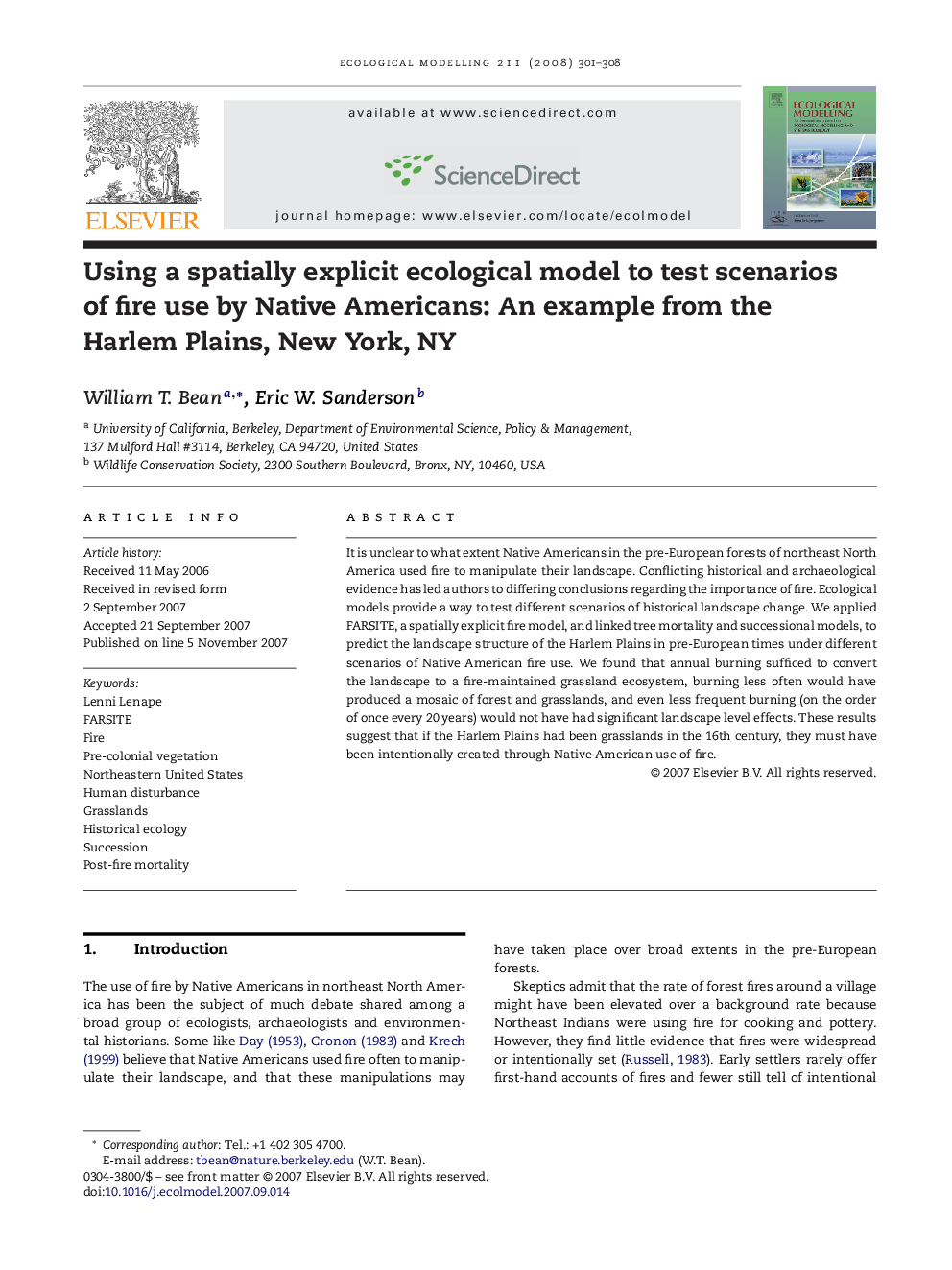| Article ID | Journal | Published Year | Pages | File Type |
|---|---|---|---|---|
| 4378124 | Ecological Modelling | 2008 | 8 Pages |
Abstract
It is unclear to what extent Native Americans in the pre-European forests of northeast North America used fire to manipulate their landscape. Conflicting historical and archaeological evidence has led authors to differing conclusions regarding the importance of fire. Ecological models provide a way to test different scenarios of historical landscape change. We applied FARSITE, a spatially explicit fire model, and linked tree mortality and successional models, to predict the landscape structure of the Harlem Plains in pre-European times under different scenarios of Native American fire use. We found that annual burning sufficed to convert the landscape to a fire-maintained grassland ecosystem, burning less often would have produced a mosaic of forest and grasslands, and even less frequent burning (on the order of once every 20 years) would not have had significant landscape level effects. These results suggest that if the Harlem Plains had been grasslands in the 16th century, they must have been intentionally created through Native American use of fire.
Keywords
Related Topics
Life Sciences
Agricultural and Biological Sciences
Ecology, Evolution, Behavior and Systematics
Authors
William T. Bean, Eric W. Sanderson,
